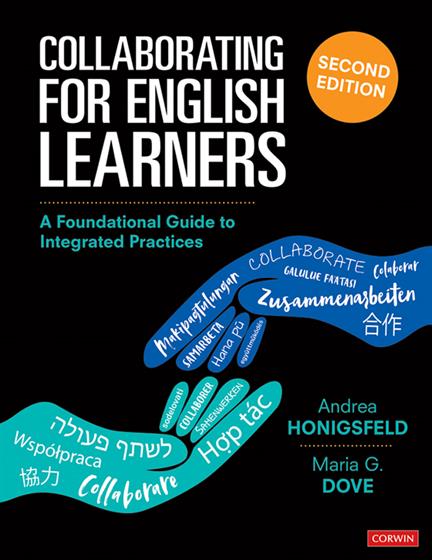
Hands-on, Practical Guidance for Educators
From math,
literacy, equity, multilingual learners, and SEL, to assessment, school counseling,
and education leadership, our books are research-based and authored by experts
on topics most relevant to what educators are facing today.
Collaborating for English Learners
But this, we promise: when EL specialists and general ed teachers pool their expertise, your ELs’ language development and content mastery will improve exponentially. Just ask the tens of thousands of Collaboration and Co-Teaching users and now, a new generation of educators, thanks to this all-new second edition: Collaborating for English Learners.
Why this new edition? Because more than a decade of implementation has generated for Andrea Honigsfeld and Maria Dove new insight into what exemplary teacher collaboration looks like, which essential frameworks must be established, and how integrated approaches to ELD services benefit all stakeholders. Essentially a roadmap to the many different ways we can all work together, this second edition of Collaborating for English Learners features:
- All-new examples, case studies, illustrative video, and policy updates
- In-depth coverage of the full range of strategies and configurations for determining the best model to adopt
- Templates, planning guides, and other practical tools to put collaboration into practice
- Guidelines, self-assessments, and questionnaires for evaluating the strategies’ effectiveness
- Grade Level: PreK-12
- ISBN: 9781544340036
- Published By: Corwin
- Year: 2019
- Page Count: 288
- Publication date: January 30, 2019
Review Copies
Review copies may be requested by individuals planning to purchase 10 or more copies for a team or considering a book for adoption in a higher ed course. To request a review copy, contact sales@corwin.com.
Other Titles in: Bilingual/ELL Learners | Teaching Strategies for Diverse Students | Collaboration & Team Building



